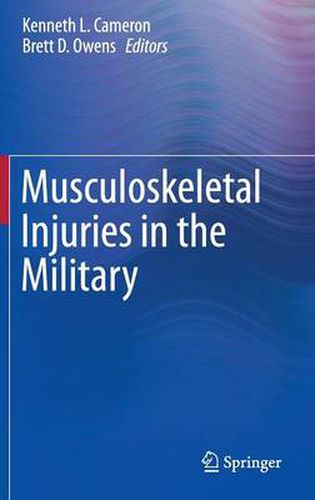Readings Newsletter
Become a Readings Member to make your shopping experience even easier.
Sign in or sign up for free!
You’re not far away from qualifying for FREE standard shipping within Australia
You’ve qualified for FREE standard shipping within Australia
The cart is loading…






This title is printed to order. This book may have been self-published. If so, we cannot guarantee the quality of the content. In the main most books will have gone through the editing process however some may not. We therefore suggest that you be aware of this before ordering this book. If in doubt check either the author or publisher’s details as we are unable to accept any returns unless they are faulty. Please contact us if you have any questions.
This authoritative reference examines the causes of–and offers workable solutions to–the widespread problem of musculoskeletal injuries among armed forces personnel. Specific chapters on combat, non-combat, training, and fitness injuries shed necessary light on the nature and scope of the epidemic, including impact on active service members and the resulting quality of life issues in veterans. An overview of these injuries by anatomic region highlights treatment, disability, and prevention issues in military settings. The book also translates the standard public health model for preventing injuries into military context, giving professionals guidelines for developing strategies tailored to the unique strengths and risks of this population.
Featured in the coverage:
*
The burden of musculoskeletal injuries in the military.
*
Traumatic combat injuries.
*
Deployment and non-battle injuries.
*
Epidemiology of musculoskeletal injuries by anatomic region.
*
Application of the public health model for injury prevention.
*
Barriers to injury prevention in the military.
Its depth of detail makes Musculoskeletal Injuries in the Military critical reading for orthopedic surgeons, physical therapists, athletic trainers, military leaders, military and VA healthcare staff including physicians and policymakers, public health and injury prevention professionals, occupational health and safety professionals, musculoskeletal injury and disease researchers, and veterans’ health advocacy groups.
$9.00 standard shipping within Australia
FREE standard shipping within Australia for orders over $100.00
Express & International shipping calculated at checkout
This title is printed to order. This book may have been self-published. If so, we cannot guarantee the quality of the content. In the main most books will have gone through the editing process however some may not. We therefore suggest that you be aware of this before ordering this book. If in doubt check either the author or publisher’s details as we are unable to accept any returns unless they are faulty. Please contact us if you have any questions.
This authoritative reference examines the causes of–and offers workable solutions to–the widespread problem of musculoskeletal injuries among armed forces personnel. Specific chapters on combat, non-combat, training, and fitness injuries shed necessary light on the nature and scope of the epidemic, including impact on active service members and the resulting quality of life issues in veterans. An overview of these injuries by anatomic region highlights treatment, disability, and prevention issues in military settings. The book also translates the standard public health model for preventing injuries into military context, giving professionals guidelines for developing strategies tailored to the unique strengths and risks of this population.
Featured in the coverage:
*
The burden of musculoskeletal injuries in the military.
*
Traumatic combat injuries.
*
Deployment and non-battle injuries.
*
Epidemiology of musculoskeletal injuries by anatomic region.
*
Application of the public health model for injury prevention.
*
Barriers to injury prevention in the military.
Its depth of detail makes Musculoskeletal Injuries in the Military critical reading for orthopedic surgeons, physical therapists, athletic trainers, military leaders, military and VA healthcare staff including physicians and policymakers, public health and injury prevention professionals, occupational health and safety professionals, musculoskeletal injury and disease researchers, and veterans’ health advocacy groups.